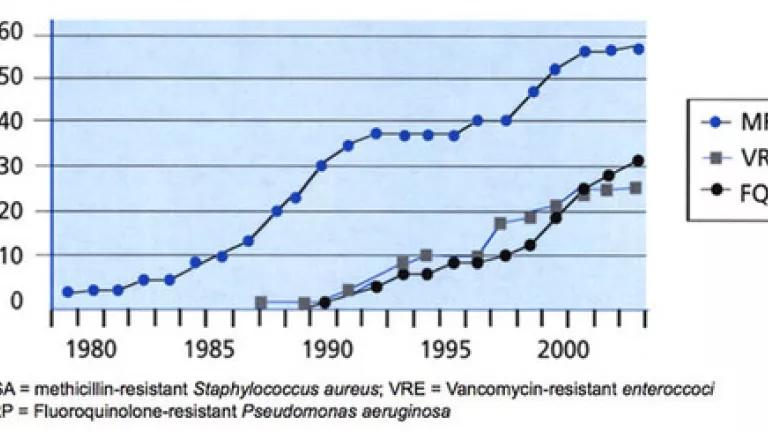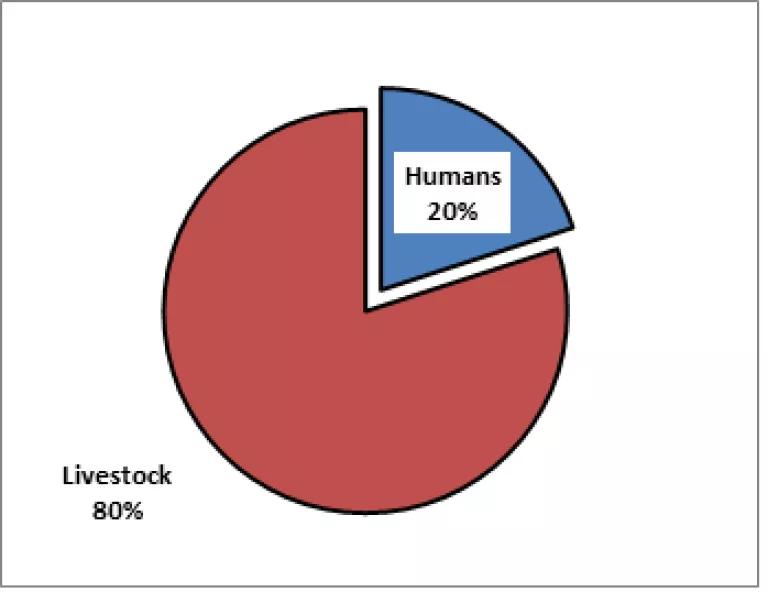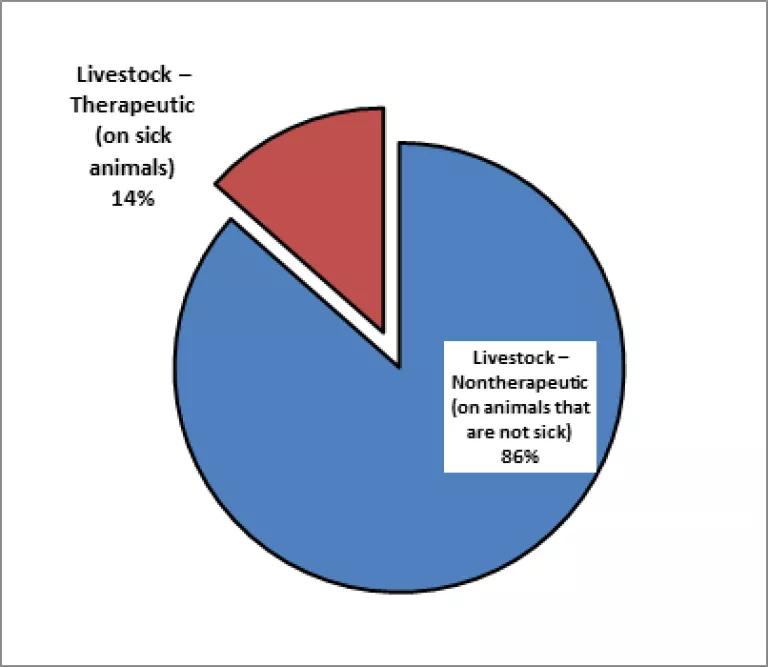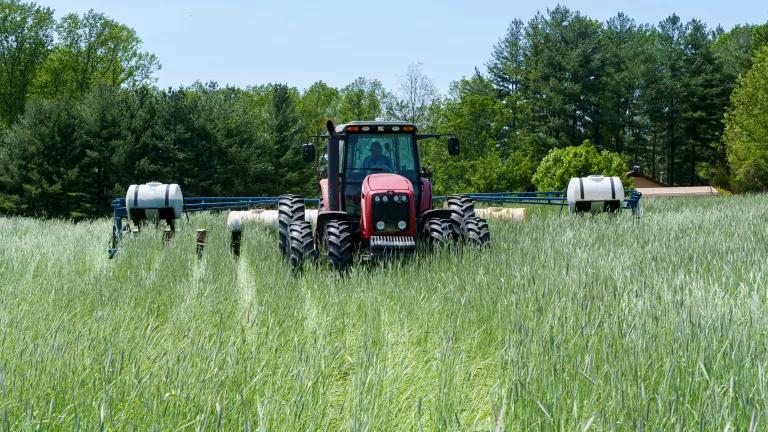
Not a lot of meat is raised here in New York City. Nonetheless, New York City played host yesterday to the U.S. Farmers and Ranchers Alliance (USFRA) Food Dialogues, a well-funded public relations project backed by some of the biggest and most notorious players in the food industry. Billed as a conversation on some of today’s most provocative topics concerning food, the event's ostensible aim was to answer Americans’ questions about how their food is produced. Unfortunately, USFRA and this latest Food Dialogue, featured mostly big agribusiness spin.
The event streamed live on the web and was accompanied by a real-time conversation on Twitter, which got particularly lively when the topic turned to the role of antibiotics in animal agriculture. Jean Halloran, Director of Food Policy Initiatives at Consumers Union, kicked off the antibiotics panel’s discussion with a description of the serious problem of antibiotics resistance Americans face today.
Antibiotics, the miracle drugs we rely on when we get sick, are losing their effectiveness and antibiotic-resistant infections are on the rise. Here is what those trends look like for just two types of antibiotic-resistant infections. [Other examples can be found on Centers for Disease Control and Prevention site, including gonorrhea, klebsiella pneumonia, and tuberculosis.]
But while parents and doctors are urged to use antibiotics sparingly, the use of antibiotics in the livestock industry goes largely unchecked.
In the subsequent discussion, I was struck by the repeated insistence that the livestock industry uses antibiotics "judiciously" and to maintain “food safety”.
The first claim is a bit difficult to swallow. The American livestock industry today uses 80% of the antibiotics sold in the country.


I don’t know about you, but I wouldn’t exactly call that judicious.
As Jean described, the vast majority of the antibiotics used in animal agriculture are administered for what the industry calls “growth promotion”—i.e. to make chickens, pigs and cows grow fatter faster so they can be sent to slaughter more quickly—and “disease prevention”—industry speak for keeping these animals from getting sick amidst the crowded and unsanitary conditions they face inside factory farms. In both cases, life-saving antibiotics are being used in massive quantities to substitute for better management practices or to unnaturally fatten animals so as to make a quicker or bigger profit.
The second theme of “food safety” likewise doesn’t pass the smell test—or the lab test, as it were.
The industry argument is that routine use of antibiotics is needed in livestock facilities to reduce the risks of foodborne illnesses for consumers. But as Jean discussed, the idea that antibiotics use in animal agriculture makes food safer just hasn’t been borne out in the data. The last time Consumers Union (CU) tested for the presence of pathogens on meat, they found that two-thirds of the chicken tested was contaminated with salmonella or campylobacter or both, and that two-thirds of that bacteria was resistant to antibiotics, making any illness a consumer got from that chicken harder to cure.
Why all that bacteria despite such large-scale use of antibiotics? It turns out that the more you use an antibiotic, the more bacteria become resistant to it.
As the CDC explains, the very use of antibiotics promotes the development of antibiotic-resistant bacteria. That’s because when bugs are exposed to antibiotics, as happens routinely in the confined feedlots where most food animals in the U.S. are raised, the weak ones are killed, but the strongest amongst them—those that are immune to the antibiotics—survive. These antibiotic-resistant “superbugs” then proliferate and can spread to consumers via contaminated meat, to farm workers and food processors through contact with contaminated animals and meat, and to soil and water through contaminated waste. Alarmingly, superbugs can also exchange genetic materials with other bacteria.
Equally difficult to square was an argument made by the industry veterinarian on the panel, who claimed that preventing disease through routine antibiotics use across entire herds benefits the food supply because producers then don't have to treat individual animals when they get sick. The casual admission that animals that are not sick are being routinely given antibiotics is striking in and of itself. But I couldn’t help but imagine applying a similar approach to our own consumption of antibiotics. We would never feed all the children in a classroom antibiotics with their daily breakfast to prevent against having to give one of them an antibiotic if they got sick on a given day. Why then should consumers accept millions of pounds of antibiotics being used this way on food animals?
The fact is, three times more antibiotics go to healthy farm animals today than to sick people. Today's industrial livestock production system might produce hundreds of millions of food animals with factory-like efficiency, but what is efficient about a system that so massively overuses and misuses a resource as precious as antibiotics?
It doesn't have to be this way. We have systems that can raise meat and poultry without reliance on antibiotics and they don’t result in food that is less safe. Indeed when CU tested chicken raised organically, a standard that precludes the use of antibiotics, they found no salmonella at all in one of the organic categories tested. As Jean concluded, “this shows you that you can raise chickens without antibiotics and they’re not overrun with disease-causing bacteria—quite the contrary.”
And while meat and poultry raised without antibiotics might be a little more expensive, a majority of Americans say they want to see more of it in the meat aisles of their supermarkets and are willing to pay more for it.
The food we eat should be safe and healthy for everyone and should not put essential medicines and our health at risk. Farmers around the world, from Texas to Denmark, are already raising healthy livestock without the use of antibiotics. I wish some of them had been invited to participate in yesterday's dialogue.


